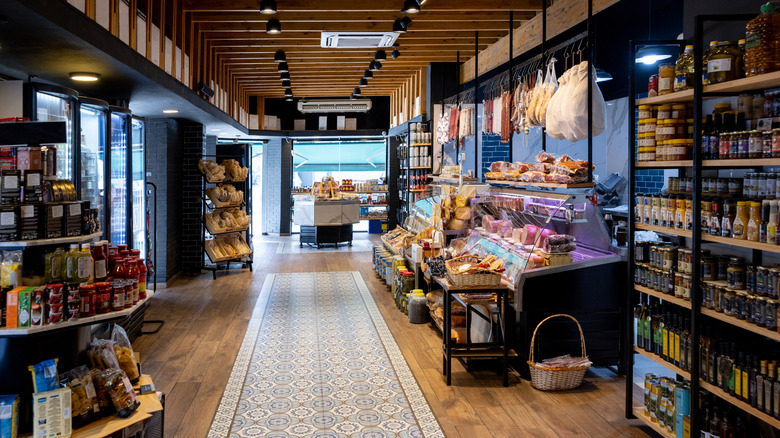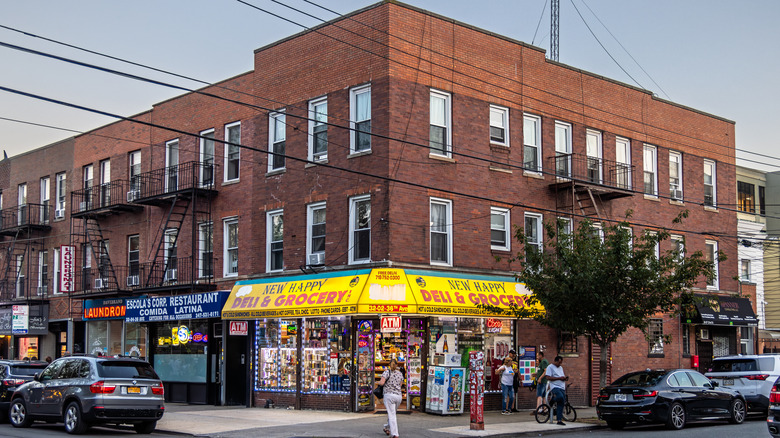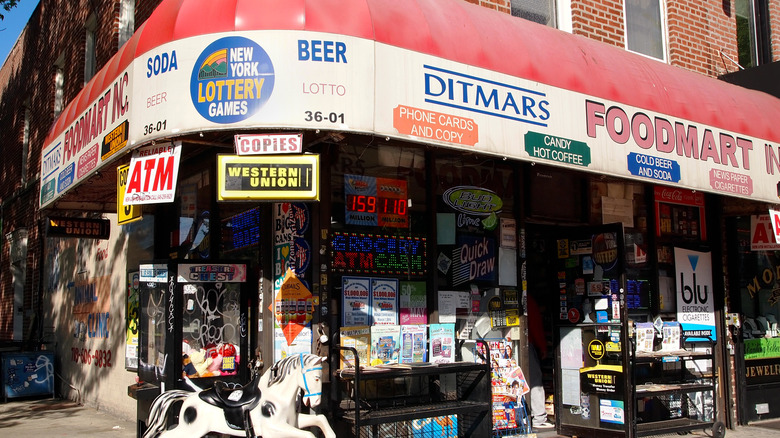What Exactly Is A Bodega And What Can You Buy At One?
Bodegas are ingrained in the fabric that makes up New York City. With one established on almost every street and corner, an estimated 13,000 bodegas exist throughout all five city boroughs. Given their pervasive presence and deep ties to the city's residents, one might wonder: What exactly is a bodega, and what can you buy at one? If you see a small shop with a cat sitting by the register and advertisements for milk, eggs, and meats, you're likely in a bodega.
However, these aren't the only items sold at these little not-so-hidden gems. Unlike specialty stores, they offer a broader range of essential foods that are influenced by many different cultures. This includes everything from snacks to sandwiches. And the best part? You can buy these goods with remarkable speed, making them convenient for those on the move. Subsequently, if you decide to stay a while, you might begin to forge meaningful connections with some very intriguing and helpful individuals in your community.
A unique mix of food, goods, and culture
Breakfast is arguably the most important meal of the day, and when it comes to a quick and satisfying start, the bodega stands out as one of the top choices. These quick shops provide hot breakfast sandwiches, from the classic bacon, egg and cheese to the local favorite pork roll. The beauty of the bodega is that it offers foods from a wide range of cultures, anything from Puerto Rican or Vietnamese to Dominican. Furthermore, the cultural items span different American regions, serving iconic foods ranging from a Philly cheesesteak to a New York deli sandwich. And if you like sweets, there are plenty of candies and pastries you can quickly order, similar to what you'd see at your local convenience store.
If you become a regular at the bodega, you may make a new friend or two on any given day, at any given time, as many of them are open 24 hours a day, seven days a week! The ways in which people come together at bodegas make them more than just a physical building on a corner that sells household items; they're also a place to form communal bonds. No matter which bodega you step into, you'll find customers who share deep connections. In many cases, their bonds also extend to the shop owners. Patrons may share information about the news and rumors or help refer each other for certain services.
How bodegas became so essential
The origins of bodegas trace back to the early 1900s as Spanish, Cuban, and Puerto Rican immigrants made their way to New York City. In due course, Puerto Ricans would take the lead in establishing most bodegas, shaping them into corner stores named after places from home that would also become places for people to form tight bonds and help each other. Each bodega would offer a taste of Puerto Rico to its customers by providing essentials like plantains and varieties of spices. After World War II, a new generation of Puerto Ricans would come to the city that never sleeps to expand their bodegas across all five boroughs.
Events such as the U.S. occupation of the Dominican Republic would bring an influx of citizens to New York City in the 1960s, and by the 1980s, an increasing number of bodegas transitioned to Dominican ownership. In Spanish, "bodega" translates to "a small wine cellar," however, today, it's generalized as a small grocery store. Nevertheless, bodegas have always been more than a store for convenience; they symbolize culture and camaraderie.


